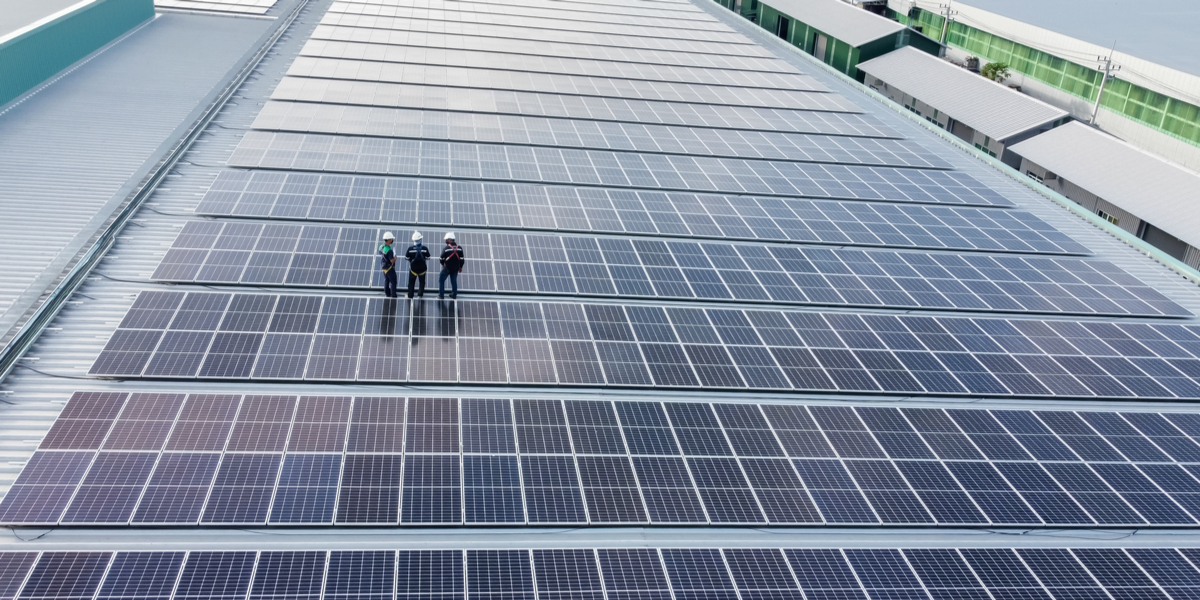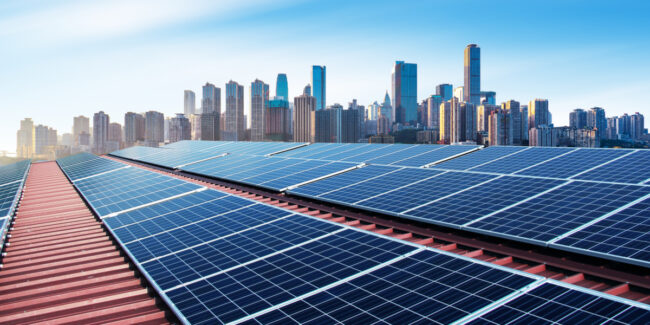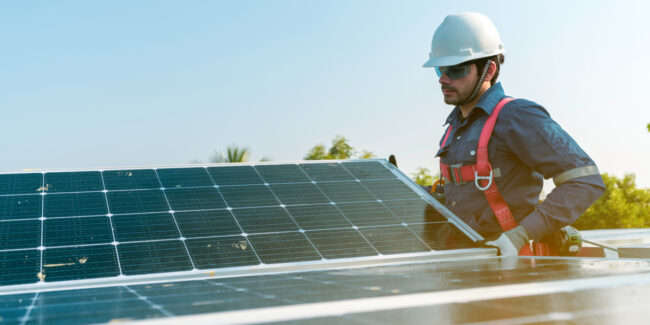
Solar cell efficiency is a reference to how much sunlight is converted into electricity. Photovoltaics are what foster this conversion. Let’s discuss how the process works and why photovoltaics are so efficient.
How Photovoltaics Work
Photovoltaics (PV) are the building blocks of solar panels. The photovoltaic effect is a process that involves a PV cell converting absorbed sunlight energy into electricity at the atomic level.
A solar PV cell produces energy in three simple steps:
- The photon is reflected and lost
- The photon releases an electron
- The emitted electron moves to the outer circuit
PV cells are made up of different semiconductor materials and are built to withstand the outdoor elements for many years. In addition, because of their modular structure, building-integrated photovoltaics products can be built to meet virtually any electricity need, small or large.
Factors That Impact Solar Cell Efficiency
Not all sunlight that reaches a solar cell is converted into power. Most of it is actually lost. There are four main environmental factors that can limit the photovoltaic efficiency of any solar panel: temperature, reflection, shading, and age.
Temperature
In general, solar cells operate best at low temperatures. Extreme heat can cause the semiconductor properties to shift and voltage to decrease. High temperatures can also damage the cells and other module materials, resulting in shorter operating lifetimes.
For example, conventional rooftop solar modules can lose up to 30 percent of their electricity output on hot summer days. For this reason, proper thermal management is crucial in improving both photovoltaic efficiency and cell lifetime.
Reflection
Photovoltaic efficiency depends on the amount of light reflected away from a cell’s surface. Anti-reflection coatings are often used to help decrease reflection. This is why high-efficiency PV cells will often appear dark blue or black.

Shading
Shade is another element that can affect solar cell efficiency. A cloudy atmosphere decreases the effectiveness of solar panels by allowing less sunlight to pass. In addition, trees, buildings, and other objects in the environment can potentially obstruct the panels’ access to sun rays. These factors should be considered when installing solar panels. Even if one solar cell in a cell string is shaded, the panel can get damaged if not adjusted.
Age
Age can impact solar cell efficiency. Solar panels produce less energy as the years pass. Generally, the decrease in performance is projected to be around 0.5% per year. This rate may seem low, but as the decades go by, they will begin to lose their efficiency. The panels will still generate energy but at a slightly reduced output.
Are Other Energy Options More Efficient?
As the world focuses more and more on sustainability, clean energy solutions rise in popularity. Energy can be harnessed through nature—sun, wind, water, and biomass. But how does solar energy compare to these other forms of renewable energy?
Solar vs. Wind
Wind turbines work by capturing kinetic energy and converting it to power. While wind technology is effective and widely used, it has its shortcomings. For example, wind turbines require much more maintenance than photovoltaic cells, and they are often noisier than solar panels. In addition, wind generating plants are typically located in distant areas, far away from consumers.
Solar vs. Hydro
Hydropower is a renewable energy source that involves hydraulic turbines using the natural flow of moving water to generate electricity. Hydropower is typically achieved through the use of large dams, resulting in high initial installation costs. In addition, these installations can alter entire ecosystems by changing the natural flow of water and affecting wildlife in the area.
Solar vs. Biomass
Biomass energy is a renewable energy resource that uses plant or animal material as fuel to produce electricity or heat.
While biomass energy produces less waste energy than fossil fuels or coal, there are still setbacks. For example, biomass creates excess volatile organic compound emissions like carbon monoxide and nitrogen oxides. On the other hand, photovoltaic cells produce no emissions and have higher efficiency rates.

Benefits of Partnering with Kaneka’s Photovoltaics Division
At Kaneka Energy Management Solutions, we strive to improve the world in which we live. Our cool roof and bi-facial technology offer substantial environmental benefits and financial incentives. Implementing the best available technologies and BIPV solutions can help lower your utility bills and significantly increase your bottom line with energy efficiency credits and depreciation benefits.
Our team will work with you to optimize your commercial or industrial property for energy generation without sacrificing the design freedom and aesthetics of your building. We look forward to helping you integrate building photovoltaics into your next project!
Contact us online today to learn more about our building-integrated photovoltaics products.